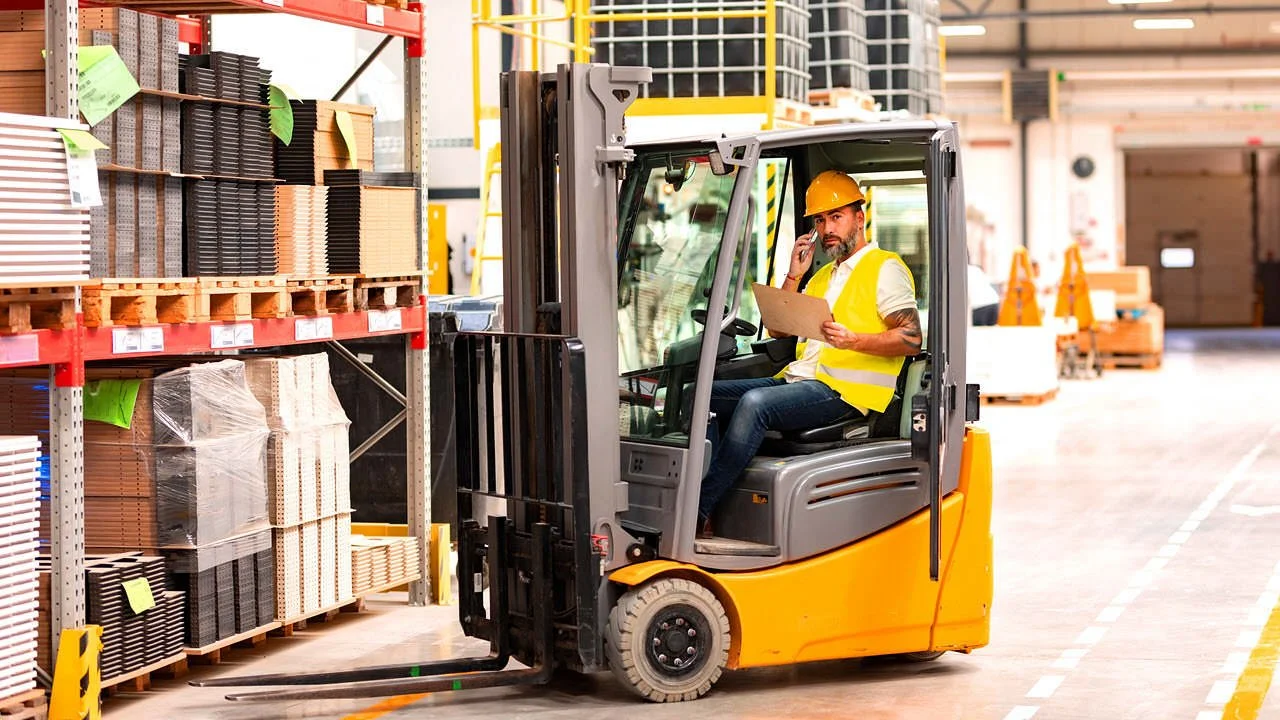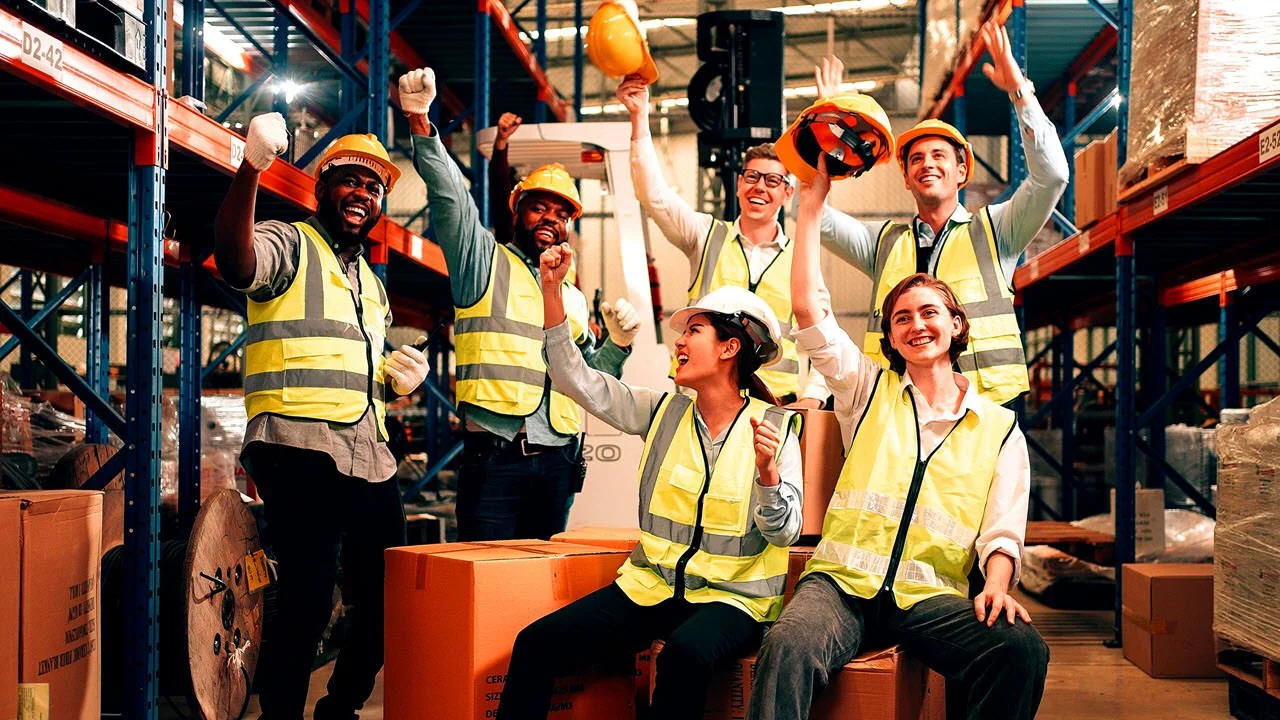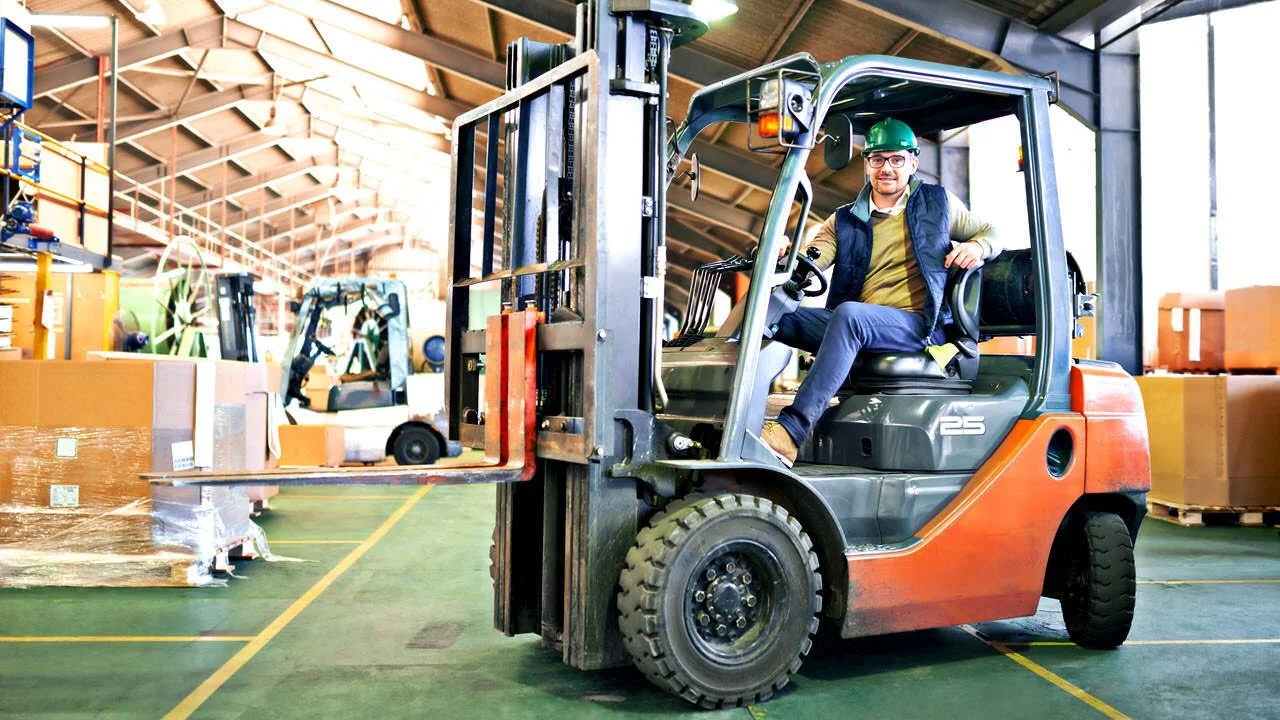Forklift Safety Technologies: Pedestrian Protection
Cutting-edge tools and tactics to minimize risk and protect lives in high-traffic industrial environments.
Forklifts are indispensable in warehouses, manufacturing plants, and logistics hubs, but they pose significant risks to pedestrians sharing the same space. According to the U.S. Occupational Safety and Health Administration (OSHA), forklifts are involved in roughly 85 fatal accidents and 34,900 serious injuries annually in the United States, with pedestrians often caught in blind spots or high-traffic zones. As workplaces strive for zero-incident environments, a range of innovative technologies and strategies has emerged to protect workers from forklift-related collisions.
This article explores the leading solutions: AI vision systems, proximity detection, wearables, integrated safety features, telematics, and training tools, offering practical insights for creating safer industrial settings. Consider tracking your journey toward a safer workplace using a structured safety maturity model, which helps organizations benchmark their current capabilities against industry best practices and plan strategic safety investments.
The future lies in proactive, layered safety systems that integrate smart technology, operator awareness, and continuous training.
Forklifts are vital to the modern supply chain, but they're also one of the most dangerous pieces of equipment in shared workspaces. When 10,000-pound machines capable of 20 mph speeds navigate the same narrow aisles as vulnerable pedestrians, the risk of catastrophic injury doesn't just increase—it transforms into a daily, life-or-death probability game. And with tighter labor markets and faster warehouse turnover, mistakes are more likely, and more costly.
I’ve spent years working with industrial technology and operations leaders, and one truth stands out: reactive safety is no longer enough. The future lies in proactive, layered safety systems that integrate smart technology, operator awareness, and continuous training. In this article, we’ll explore the most impactful tools and strategies shaping a safer workplace, today and tomorrow.
“Safety doesn’t just protect lives—it protects momentum. In fast-paced industrial environments, even a single incident can ripple through operations, causing delays, demoralization, and cost. Smart leaders understand that safety isn’t a checkbox—it’s a business enabler. By investing in technologies that anticipate danger before it strikes, they create environments where safety is innovation in action, and every worker feels empowered to do their best work.”
Why It Matters More Than Ever
With increasing automation, faster warehouse cycles, and labor shortages leading to less experienced operators, the risk to pedestrians is growing. At the same time, insurance premiums, regulatory scrutiny, and corporate ESG commitments are pushing companies to prioritize proactive safety strategies. Investing in pedestrian protection isn’t just about compliance—it’s about protecting lives, minimizing downtime, and improving workforce morale.
Workers wear smart vests, helmets, or wristbands equipped with sensors.
1. AI & Vision-Based Pedestrian Detection
Among the most advanced tools for forklift safety are systems that leverage artificial intelligence (AI) and high-resolution cameras to detect pedestrians in real time. These technologies excel at identifying human shapes, even in cluttered or poorly lit environments, making them a cornerstone of modern warehouse safety.
How It Works:
Cameras mounted on forklifts capture continuous footage, which AI algorithms analyze to recognize pedestrians based on posture, movement, or size. When a worker enters a predefined detection zone—sometimes extending 30 meters—the system triggers visual, audible, or haptic alerts to warn the operator. Some systems integrate LiDAR for precise distance measurement or use deep learning to adapt to diverse conditions, like rain or dust. Advanced setups can distinguish humans from inanimate objects, reducing false alarms.
Benefits:
AI vision systems eliminate blind-spot risks, a leading cause of collisions. They offer customizable detection zones tailored to specific equipment or layouts, ensuring flexibility across narrow aisles or open yards. By providing clear, immediate feedback, they boost operator confidence without overwhelming them with unnecessary alerts.
Implementation Strategies:
Deploy these systems on forklifts operating in busy pedestrian zones, such as loading docks. Pair with operator training to ensure quick responses to alerts, and update AI models regularly to maintain accuracy in evolving environments. Implementation Strategies: Deploy these systems on forklifts operating in busy pedestrian zones, such as loading docks. Pair with operator training to ensure quick responses to alerts, and update AI models regularly to maintain accuracy in evolving environments. Industry safety consultants consistently highlight that AI vision systems represent a significant advancement in pedestrian protection technology, with their ability to perceive what humans cannot making them especially valuable in complex environments.
2. Proximity Detection & Collision Avoidance
Proximity detection systems create virtual safety perimeters around forklifts, alerting both operators and pedestrians to potential collisions, even without direct visibility. These solutions are ideal for complex environments where obstacles or walls obscure sightlines.
How It Works:
Several technologies power proximity detection:
Radio Frequency Identification (RFID): Workers wear tags that communicate with forklift-mounted antennas, triggering alerts when within 5–10 meters.
Ultra-Wideband (UWB): Provides pinpoint location tracking, enabling tiered warnings (e.g., caution at 10 meters, danger at 3 meters).
LiDAR: Uses laser scans to map surroundings, detecting pedestrians and adjusting forklift speed automatically.
Bluetooth Real-Time Location Systems (RTLS): Employs angle-of-arrival signals for precise indoor positioning, alerting operators to nearby workers.
Magnetic Fields: Senses pedestrians through racks or walls, perfect for cluttered warehouses.
Benefits:
These systems shine in low-visibility settings, reducing reliance on human vigilance. Configurable zones adapt to workflows, and some integrate with forklift controls for automated slowdowns or stops, enhancing safety in critical moments.
Implementation Strategies:
Use tag-based systems for large workforces to track every pedestrian. Deploy LiDAR or UWB for automated forklifts in dense settings, and integrate with speed controls for active intervention. Regular calibration ensures accuracy.
Organizations that invest early will not only reduce incidents but also boost efficiency.
3. Wearable & Safety Zone Technology
Wearable devices and physical barriers empower pedestrians to stay aware of forklifts while reinforcing safe boundaries in shared workspaces.
How It Works:
Workers wear smart vests, helmets, or wristbands equipped with sensors (e.g., UWB, RFID) that vibrate, flash, or beep when a forklift approaches. IoT-based systems create virtual safety zones around individuals, alerting both parties without physical barriers. Alternatively, polymer-based guards segregate pedestrian walkways, sometimes embedded with sensors for added detection.
Benefits:
Wearables give workers agency to avoid hazards, integrating seamlessly into existing safety gear. Virtual zones offer flexibility in dynamic layouts, while physical barriers provide a fail-safe for high-risk areas like intersections.
Implementation Strategies:
Issue wearables to all workers in shared spaces, paired with training on alert responses. Use virtual zones with clear signage to guide pedestrian paths, and install barriers in fixed layouts for permanent segregation.
4. Integrated Forklift Safety Systems
Modern forklifts increasingly feature built-in safety systems, combining sensors, cameras, and automation to enhance operator decision-making without aftermarket add-ons.
How It Works:
In-cab monitors display live camera feeds, highlighting pedestrians with overlays or alerts. Sensors (e.g., ultrasonic, infrared) detect obstacles during reversing or turning, triggering warnings. Operator-assist systems adjust speed or braking based on real-time data, ensuring compliance with safety protocols.
Benefits:
Integrated systems are reliable and user-friendly, minimizing training needs. They enhance situational awareness and align with regulations like OSHA’s forklift standards, reducing liability risks.
Implementation Strategies:
Retrofit older forklifts with integrated systems for cost-effective upgrades. Standardize across fleets for consistency, and pair with telematics to track safety events.
5. Forklift Fleet Management & Telematics
Telematics systems monitor forklift operations, providing data-driven insights to prevent accidents and optimize safety protocols.
How It Works:
Sensors track speed, impacts, and operator behavior, flagging risks like speeding near pedestrians. Mobile apps enable real-time hazard reporting, ensuring swift corrective actions. Geofencing slows forklifts in pedestrian-heavy zones, reinforcing safe practices.
Benefits:
Telematics identifies trends, such as frequent near-misses, guiding targeted improvements. They promote operator accountability and support proactive maintenance to avoid equipment-related incidents.
Implementation Strategies:
Share analytics via dashboards to engage operators and managers. Integrate with detection systems to correlate alerts with operational data, and conduct regular audits to address risks.
6. Training & Simulation Technologies
Effective training ensures operators can leverage safety technologies while maintaining pedestrian awareness, bridging the gap between tools and human judgment.
How It Works:
Virtual reality (VR) platforms simulate warehouse scenarios, exposing operators to hazards like sudden pedestrian crossings. Interactive modules teach alert response protocols, and real-time feedback refines techniques, such as scanning blind spots.
Benefits:
VR builds muscle memory for high-pressure decisions, reducing errors. It accelerates onboarding and supports refresher training to address new risks, ensuring compliance.
Implementation Strategies:
Integrate VR into annual training, simulating site-specific challenges. Pair with real-world drills to reinforce technology use, like responding to AI-driven alerts.
“Every time we choose prevention over reaction, we take control of our future. In the world of forklifts and fast-moving workflows, the safest route is also the most strategic. When you embed safety into your culture, your processes, and your tech stack, you’re not just reducing risks—you’re amplifying trust, productivity, and long-term resilience.”
Common Pitfalls to Avoid
Even the best technology can fall short without the right implementation. Key pitfalls include:
Undertraining operators – Tools require behavioral buy-in to be effective.
Overreliance on automation – Operators still need active situational awareness.
Neglecting maintenance – Dirty cameras or outdated software lead to false alerts.
Ignoring telematics data – Risk patterns often emerge in the analytics, but go unused.
Fragmented systems – Mixing vendors without integration leads to inefficiencies and confusion.
Protecting pedestrians around forklifts requires a layered approach.
Actions Today
Here are four things you can do immediately to improve forklift safety in your facility:
Pilot an AI Vision System – Begin with high-traffic areas like loading docks and cross-aisles, then meticulously track near-misses before and after implementation. When you can demonstrate meaningful reduction in close calls, expansion funding will follow naturally.
Distribute Smart Wearables – Equip staff with basic proximity-alert wristbands. It’s low-cost and shows immediate ROI in risk reduction.
Audit Telemetry Data Weekly – Use your forklift fleet data to identify risky behaviors or blind intersections before they cause harm.
Run a VR Training Module – Expose operators to pedestrian hazards in a safe, controlled environment. It builds confidence and habits.
Conclusion: Building a Smarter, Safer Future
Protecting pedestrians around forklifts requires a layered approach, blending AI vision, proximity detection, wearables, integrated systems, telematics, and training. By addressing both technological and human factors, these solutions reduce the serious forklift-related injuries that OSHA reports annually, potentially saving lives from fatal accidents that occur each year. Warehouse leaders should assess their unique risks—layout, workforce, and workflows—to select complementary technologies while fostering a safety culture through ongoing training.
Looking ahead, the integration of pedestrian detection with autonomous forklifts, digital twins, and IoT ecosystems will shape the next generation of industrial safety. I've witnessed firsthand how cloud-connected systems that share safety data across fleets are transforming reactive safety programs into predictive safeguarding networks. The organizations embracing this mindset aren't just avoiding accidents; they're fundamentally reimagining how humans and machines share space. Organizations that invest early will not only reduce incidents but also boost efficiency, reputation, and worker confidence.
—
#ForkliftSafety #WarehouseSafety #AIPedestrianDetection #CollisionAvoidanceSystems #ProximityDetection #WorkplaceSafety #EHSCompliance #IndustrialSafetyTechnology #OSHACompliance #VRTraining





